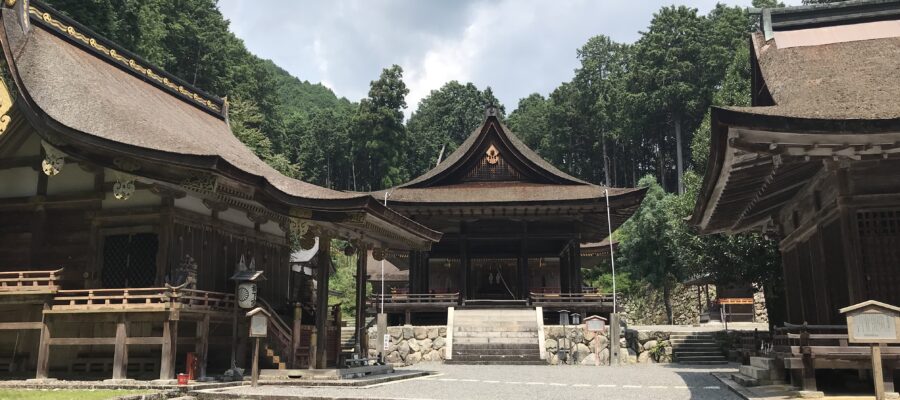比叡山の東側の麓に鎮座するこの神社は、約2,100年前に創始され、全国に3,800の分霊社(日吉、日枝、山王神社)の総本宮でもあります。境内には魔除けの象徴として、神猿(まさる)と呼ばれる猿が祀られ、「魔が去る、何よりも勝る」と因んで大切にされてきたそうです。
今回は北側に位置する西教寺から歩いてきたため、最初に東本宮からお参りすることになりました。楼門をくぐると、目の前に東本宮の境内が広がります。奥にある東本宮の本殿は国宝に指定されています。真夏の正午過ぎに現地を訪れたためか、人っこ一人いない様子です。暑くて、こんな時間に誰も参拝に来ないですよね。
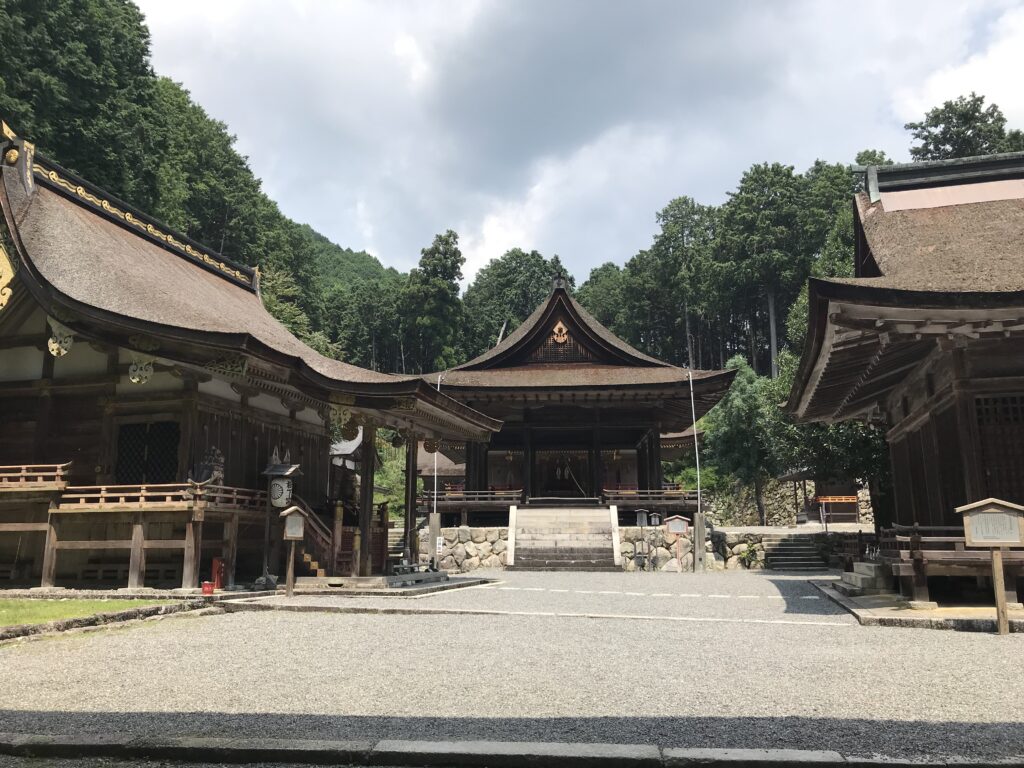
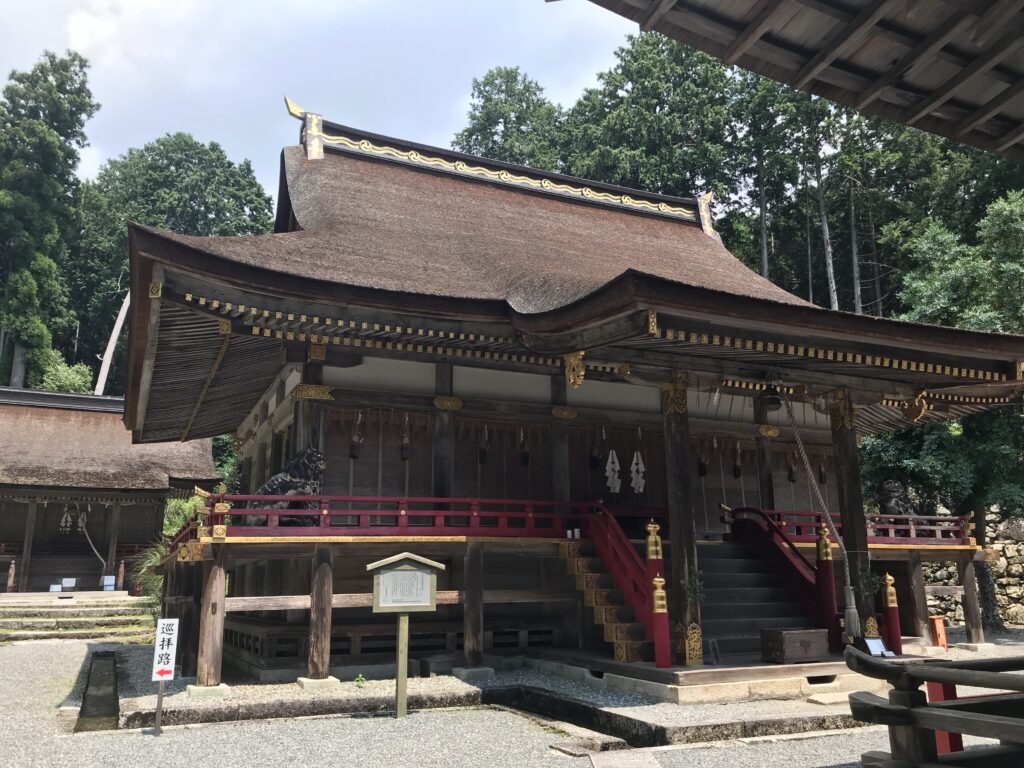
この東本宮の参道には、「猿の霊石」と呼ばれる大きな石が置かれいます。猿に似ていると聞いていたので、正面から見て見ましたが、いま一、猿に見えません。近くにあった標識には、側面から見ると猿っぽく見えるとのことでしたので、横から見て見ました。どうでしょう、なんとなく猿の横顔に見えないでしょうか。現場で3次元の石を見ると、だんだんと猿に似てくるように思えました。

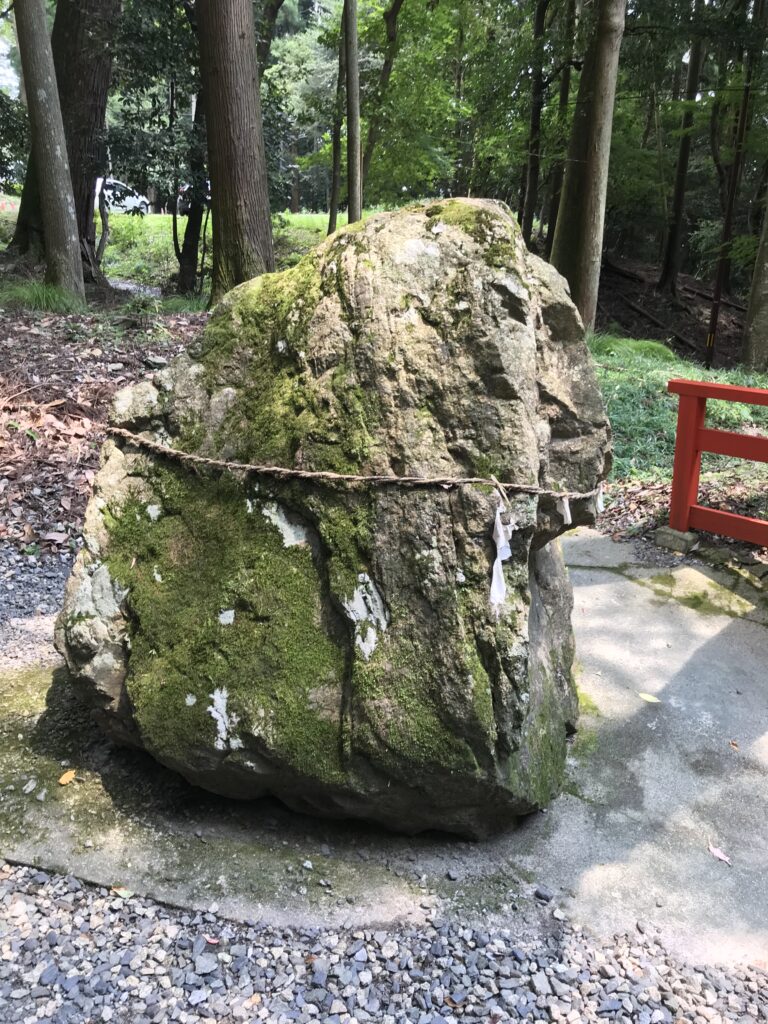
少し歩いて、次に西本宮まできました。こちらで御朱印をいただいて、本殿をお参りします。西本宮の本殿も「日吉造(ひえづくり)」という独特の形で、国宝に指定されています。床下にはかつて仏事を営んだ部屋があるそうです。神仏習合の名残です。
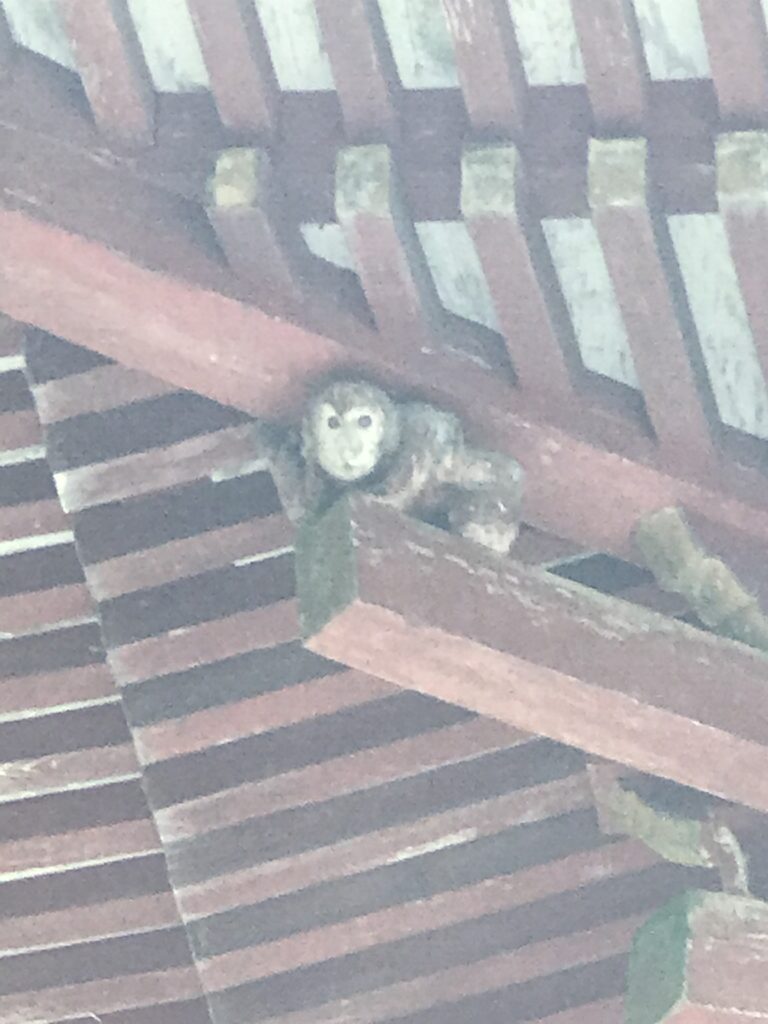
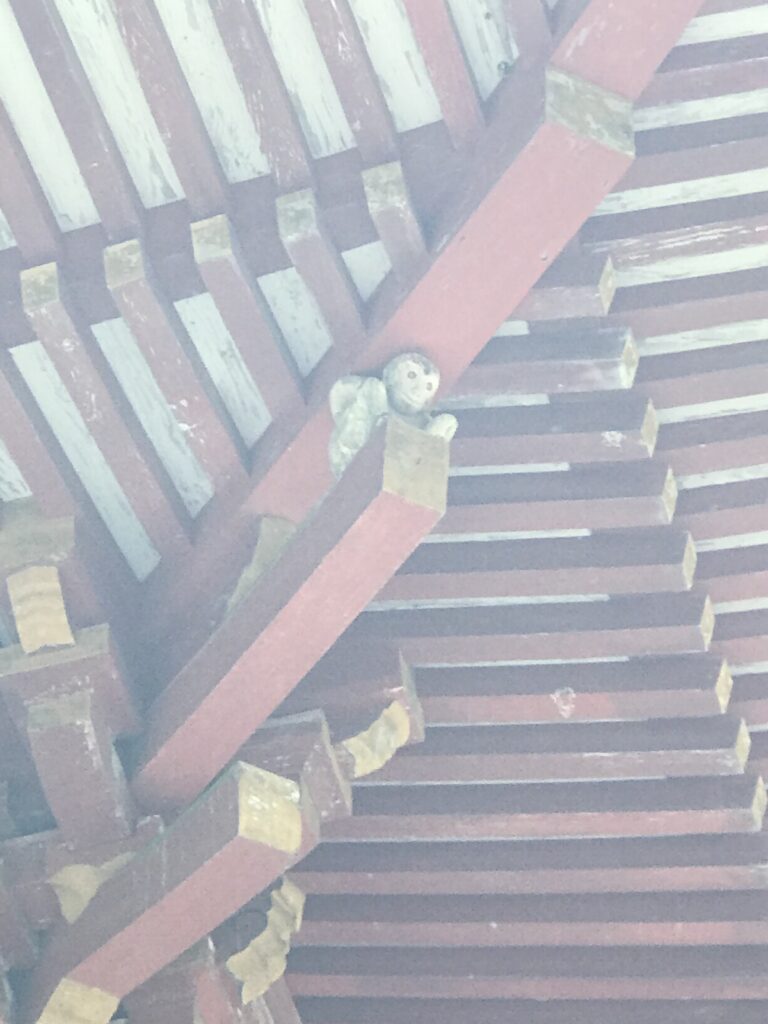
さて、この西本宮の楼門には猿が何匹か隠れています。蟇股にも彫られていますが、写真ではわかりにくので、4隅の軒下にいる猿たちをご紹介します。わりと高い位置にあるので、拡大して撮影したせいか、写真が少し荒くなっています。4匹それぞれ表情やポーズが異なりますので、ご覧ください。(完)
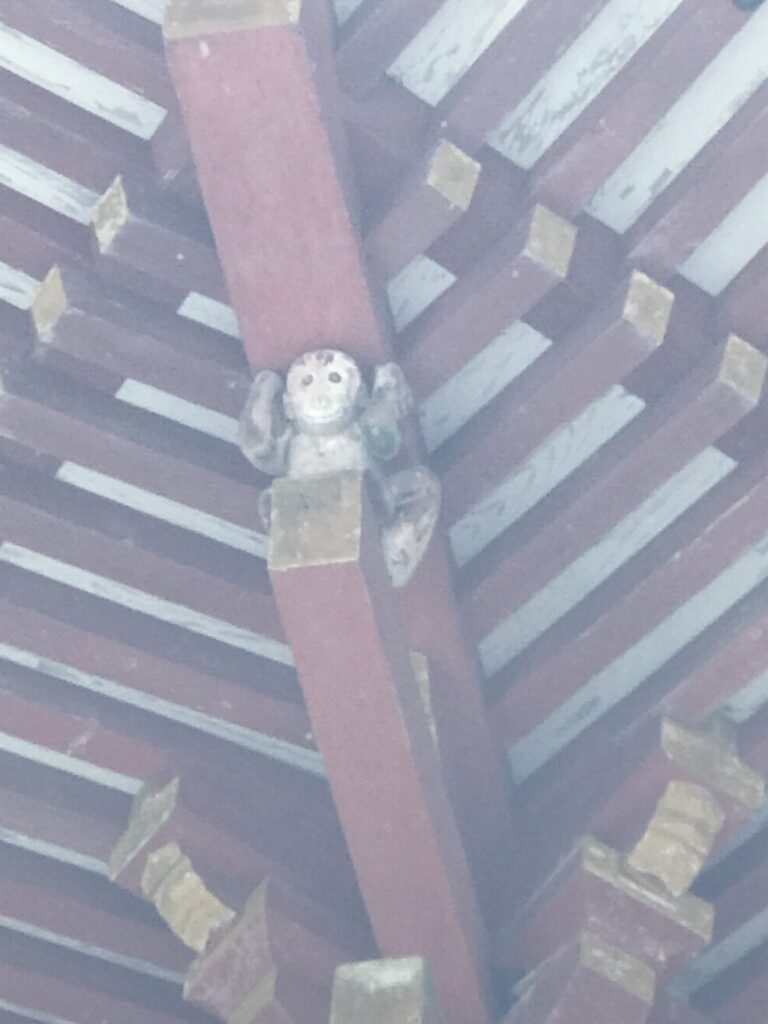
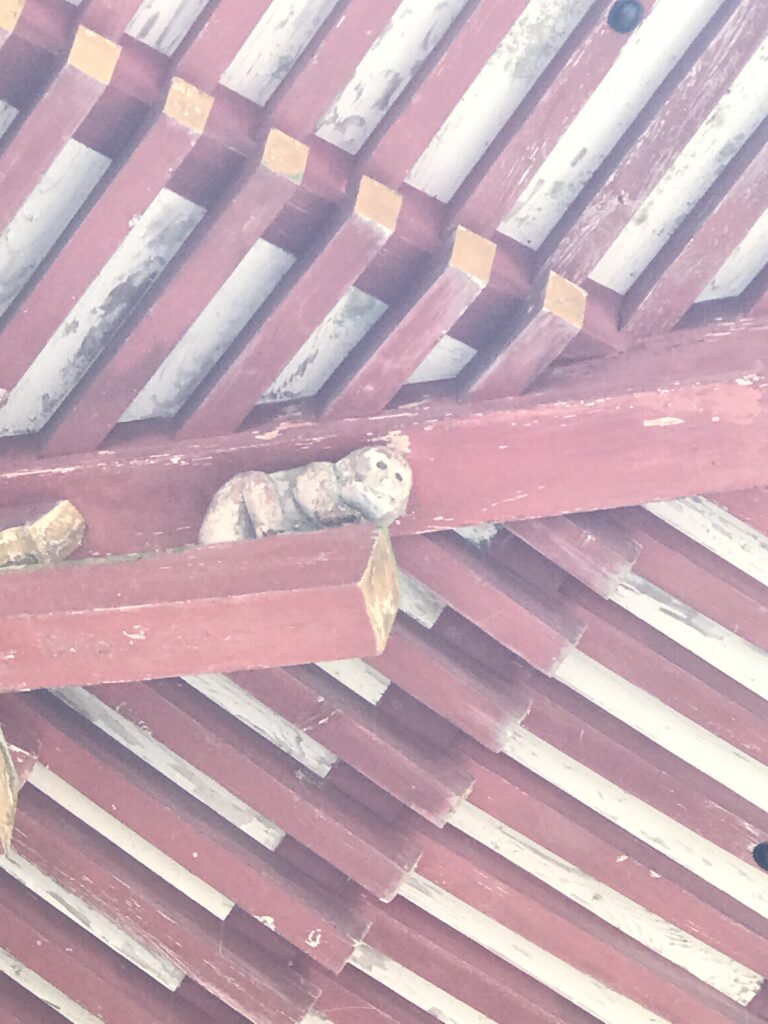
日吉大社の御朱印
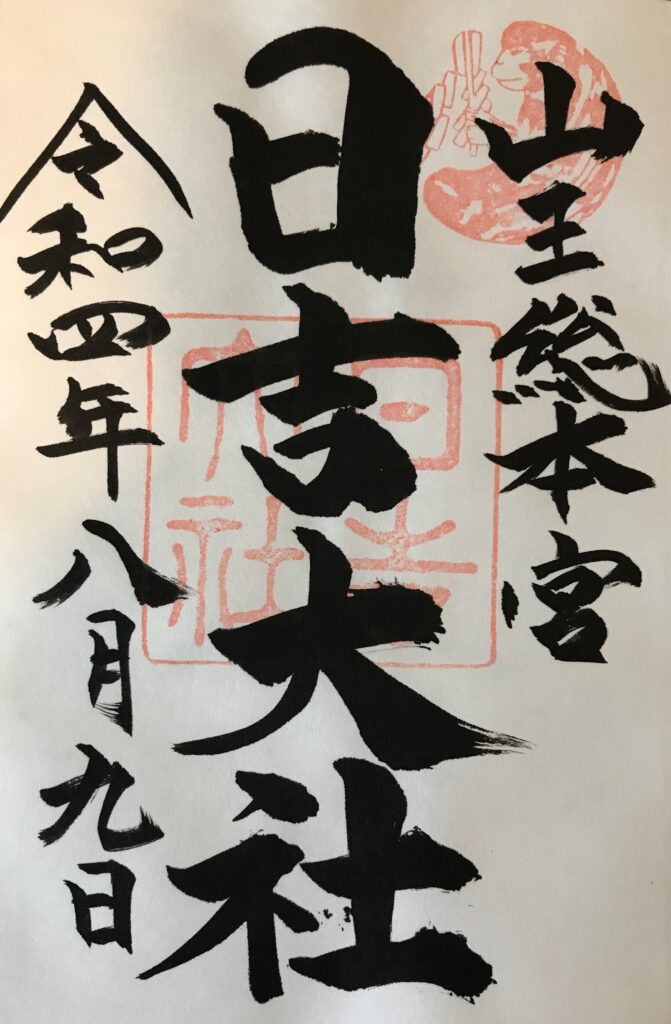
滋賀県のお土産
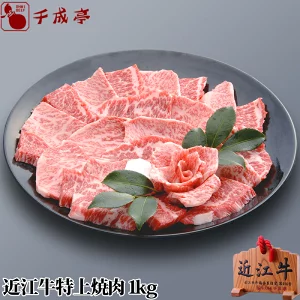
「近江牛 特上焼肉 1kg」 ギフト プレゼント 御祝 内祝 お返し
価格:10,800円
(2022/8/10 13:52時点)
感想(22件)
Hiyoshi-taisha Shrine (Sakamoto, Shiga Prefecture)
This shrine, located at the eastern foot of Mt. Hiei, was founded about 2,100 years ago and is the head shrine of 3,800 branch shrines (Hiyoshi, Hie, and Sanno shrines) throughout Japan. A monkey called Masaru is enshrined on the shrine grounds as a symbol of protection against evil, and has been cherished because it is believed to be “better than anything else” and “keeps evil away.”
This time, since I walked from Saikyoji Temple located on the north side of the temple, I had to visit the East Main Shrine first. Passing through the tower gate, the precincts of the East Main Shrine spread out before me. The main shrine of the East Main Shrine, located in the back, is designated as a national treasure. Perhaps because I visited the site a little after noon in mid-summer, there was not a single person in sight. It was so hot that no one would come to visit the shrine at this time of day.
On the approach to the East Main Shrine, there is a large stone called the “Monkey Spirit Stone. I had heard that it looked like a monkey, so I looked at it from the front, but it does not look like a monkey at all. A sign nearby said that it looked like a monkey when seen from the side, so I looked at it from the side. What do you think? Doesn’t it look somewhat like a monkey’s profile? When I looked at the stone in three dimensions at the site, it seemed to me that it gradually began to resemble a monkey.
After a short walk, I next came to the West Main Shrine. Here I received a red seal and visited the main shrine. The main hall of the West Main Shrine is also designated as a national treasure because of its unique “hiei-zukuri” style. It is said that there is a room under the floor where Buddhist rituals were once conducted. This is a remnant of the syncretism of Shintoism and Buddhism.
There are several monkeys hiding in the tower gate of this western main shrine. They are carved on the toadstools, but it is difficult to see them in the photo, so I will show you the monkeys under the eaves in the four corners. The photo is a little rough, probably because it is rather high up and I had to zoom in, but each of the four monkeys has a different expression and pose, so please take a look. (End)
Sanctuaire Hiyoshi-taisha (Sakamoto, préfecture de Shiga)
Ce sanctuaire, situé au pied oriental du mont Hiei, a été fondé il y a environ 2 100 ans et est le sanctuaire principal de 3 800 sanctuaires secondaires (sanctuaires Hiyoshi, Hie et Sanno) dans tout le Japon. Un singe appelé Masaru est enchâssé dans l’enceinte du sanctuaire en tant que symbole de protection contre le mal, et a été chéri parce qu’on pense qu’il est “meilleur que tout le reste” et qu’il “éloigne le mal”.
Cette fois-ci, comme j’ai marché depuis le temple Saikyoji situé sur le côté nord du temple, j’ai dû visiter d’abord le sanctuaire principal est. Après avoir franchi la porte de la tour, l’enceinte du Grand Temple de l’Est s’est étendue devant moi. Le sanctuaire principal de l’est, situé à l’arrière, est désigné comme un trésor national. Peut-être parce que j’ai visité le site un peu après midi, en plein été, il n’y avait pas une seule personne en vue. Il faisait si chaud que personne ne venait visiter le sanctuaire à cette heure de la journée.
À l’approche du sanctuaire principal est, il y a une grande pierre appelée ” pierre de l’esprit du singe “. J’avais entendu dire qu’elle ressemblait à un singe, alors je l’ai regardée de face, mais elle ne ressemble pas du tout à un singe. Un panneau à proximité disait qu’elle ressemblait à un singe vue de côté, alors je l’ai regardée de côté. Qu’en pensez-vous ? Ne ressemble-t-elle pas un peu au profil d’un singe ? Lorsque j’ai regardé la pierre en trois dimensions sur le site, il m’a semblé qu’elle commençait progressivement à ressembler à un singe.
Après une courte promenade, je suis arrivé au sanctuaire principal ouest. J’y ai reçu un sceau rouge et visité le sanctuaire principal. Le hall principal du sanctuaire principal de l’Ouest est également désigné comme un trésor national en raison de son style unique “hiei-zukuri”. On dit qu’il y a une pièce sous le plancher où se déroulaient autrefois des rituels bouddhistes. C’est un vestige du syncrétisme du shintoïsme et du bouddhisme.
Plusieurs singes se cachent dans la tour de ce sanctuaire principal occidental. Ils sont sculptés sur les crapauds, mais il est difficile de les voir sur la photo, je vous montrerai donc les singes sous les avant-toits aux quatre coins. La photo est un peu grossière, probablement parce qu’elle est assez haute et que j’ai dû zoomer, mais chacun des quatre singes a une expression et une pose différentes, alors je vous invite à regarder. (Fin)
